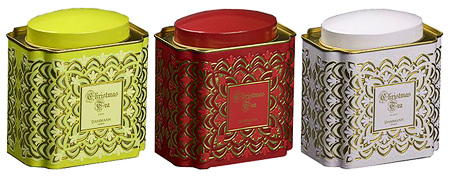This month the following teas were reviewed in the Tea Colleciton
Month’s Reviews | December 2009
2 01 2010Comments : Leave a Comment »
Tags: Dammann Freres, December, Herbal Tea, Mulled Wine, Reviews, Tea, White Tea
Categories : News
The making of Blooming Tea
31 03 2009This is an great video about blooming/flowering teas and the most interesting part is towards the end, when they show how these teas are made by hand and what process they go though. It is truly amazing how much work goes into creating one of those and it requires a lot of patience and dedication.
Comments : Leave a Comment »
Tags: Blooming Tea, Flowering Tea, Flowers, Food, Handmade, Tea, Video, Videos, White Tea
Categories : Videos
Month’s Reviews | March 2009
30 03 2009This month the following teas were reviewed in the Tea Colleciton
Comments : Leave a Comment »
Tags: 2009, Black Tea, Citrus, Dammann, Double Orchids, Green Tea, Mandarin, March, Milk Oolong, Mulberry Tea, Review, Reviews, Revolution Tea, Shanshan, Silk Oolong, Tea, Tetley, Touch Organic, White Tea
Categories : News
Dammann Christmas Editions
21 12 2008In time for Christmas Dammann Freres has released three Christmas Teas. These special teas are loose leaf teas and they come in beautiful, decorative caddies. Tea Blanc is a white tea from China with purple blueberry petals, shades of fruited almonds and cherries, with a dash of spices and ginger. Tea Rouge is ceylon/Chinese teas with notes of orange, pineapple, caramel, maraschino with orange rind and fruit pieces. Tea Vert is a green tea from China with orange rinds and pieces of apple, scanted with vanilla, orange and spices.
I have tried Christmas Tea Blanc and I was blown away by its form and aroma. The white tea leaves are mixed with a large amount of pink petals creating dreamy contrast. Combined with the saturated cherry/sakura aroma it creates perfect harmony. I think is is one of the most beautiful and attractive looking teas I have seen so far. The liquor is of pale yellow color just like other white teas and as fragrant as in dry form. I defiantly want to try the two other teas if I have the chance.
These teas unlike a lot of other Christmas teas or winter teas have unusual ingredients. Instead of the traditional cinnamon-clove-raisin combinations they are more exotic, yet they bring the Christmas spirit with them, which I think is fantastic. You can also buy them in a gift box of three.

Related links – http://www.boutique-dammann.com/
Comments : Leave a Comment »
Tags: Black Tea, Christmas, Christmas Tea, Dammann Freres, Drinks, Food, Green Tea, Spices, Tea, White Tea
Categories : Products
Lipton Red and White Ice Teas
13 12 2008With the rising popularity of tea in the western world, beside our classic black iced tea new tea types started finding their way to the bottle. Among many brands the known and recognized Lipton has brought Red and White Ice Teas to supermarket shelves. I have tasted them both and here is what I think.
Lipton White Tea has the smell resembling sour cabbage – not very pleasant at all. The flavor is much better then the smell, delicate, just like white tea should be, but much more like jasmine scented green tea. It’s not a surprise, since the content lists 0,12% green tea extract and 0,02% white tea extract. At this point I can’t help felling a bit cheated. It’s not very sweet, but rather sour , like lemonade with that slight hint of the mellow white tea taste.
Lipton Red Tea on the other hand is more like a tropical fruit lemonade and resembles tea a lot less then the White variant. The tea content here is 0,1% black tea, 0,05% rooibos and 0,05% red tea. The aroma here is much more friendly – fruity and exotic and the flavor is similar to the previous tea – sour and not too sweet. I don’t feel like this one is related to tea at all.
To sum up the White Tea is more authentic to the tea actual tea, but the Red Tea is much more pleasant to drink. Generally, if you’re on the go, they are ok (a better choice then Coca-Cola), but I’m not at all satisfied with the quality and that the content of actual tea in those is ridiculously low.

Comments : 1 Comment »
Tags: Beverages, Bottled Drinks, Drinks, Food, Iced Tea, Lipton, Red Tea, White Tea
Categories : Products
Teaposy Blooming Tea
22 08 2008Teaposy offers a wide selection of beautfully blooming teas. I watched this video showing the teas they offer and it makes me want to try them soon.
Not much more to say. I thought Red Song looks very exciting. They offer different packges, each contains 6 teas andyou can chack them all out on their website. More on the teas once I’ve tried them.
Related links – http://www.teaposy.com/
Comments : Leave a Comment »
Tags: Beverage, Blooming Teas, Flowers, Products, Tea, White Tea
Categories : Products, Videos
 Bai Hao Yin Zhen
Bai Hao Yin Zhen  Pai Mu Tan
Pai Mu Tan  Shou Mei
Shou Mei Fujian New Craft White Tea
Fujian New Craft White Tea